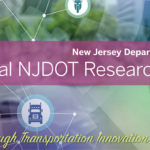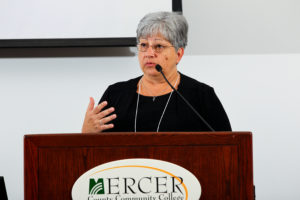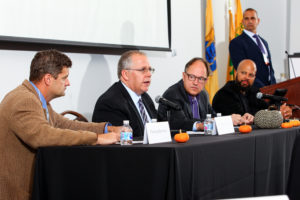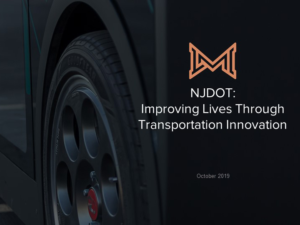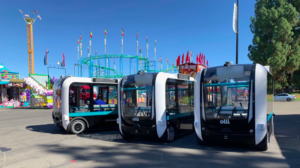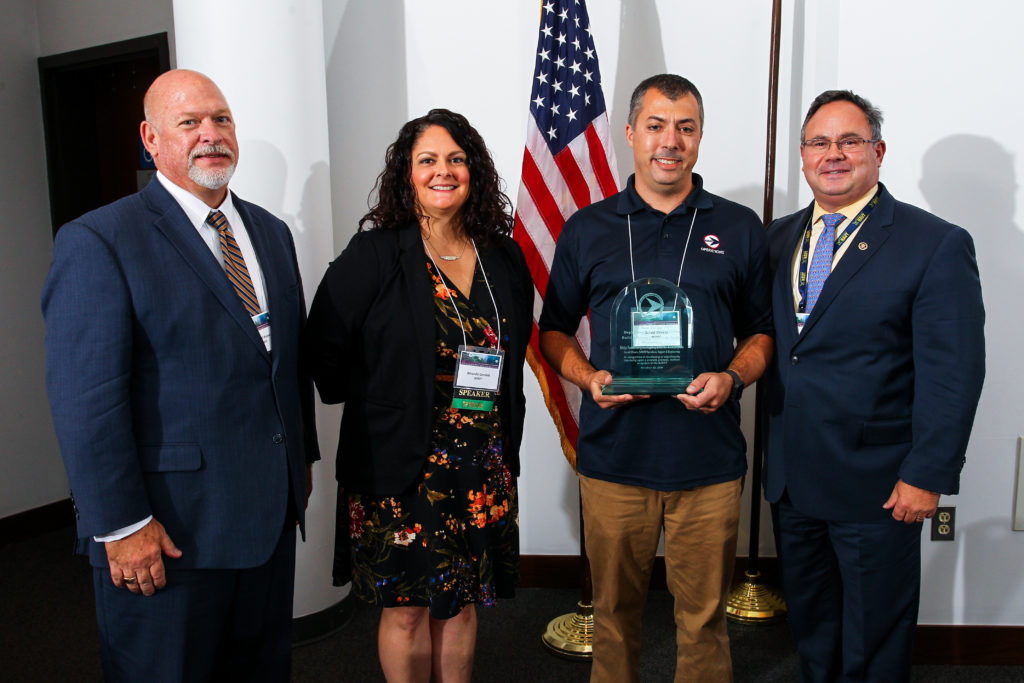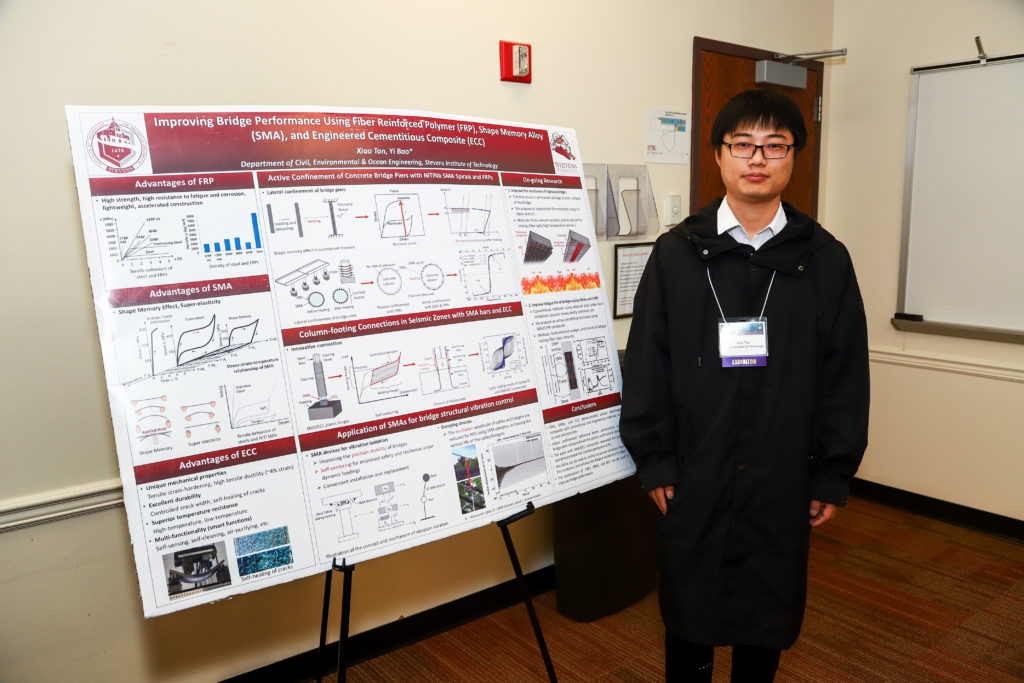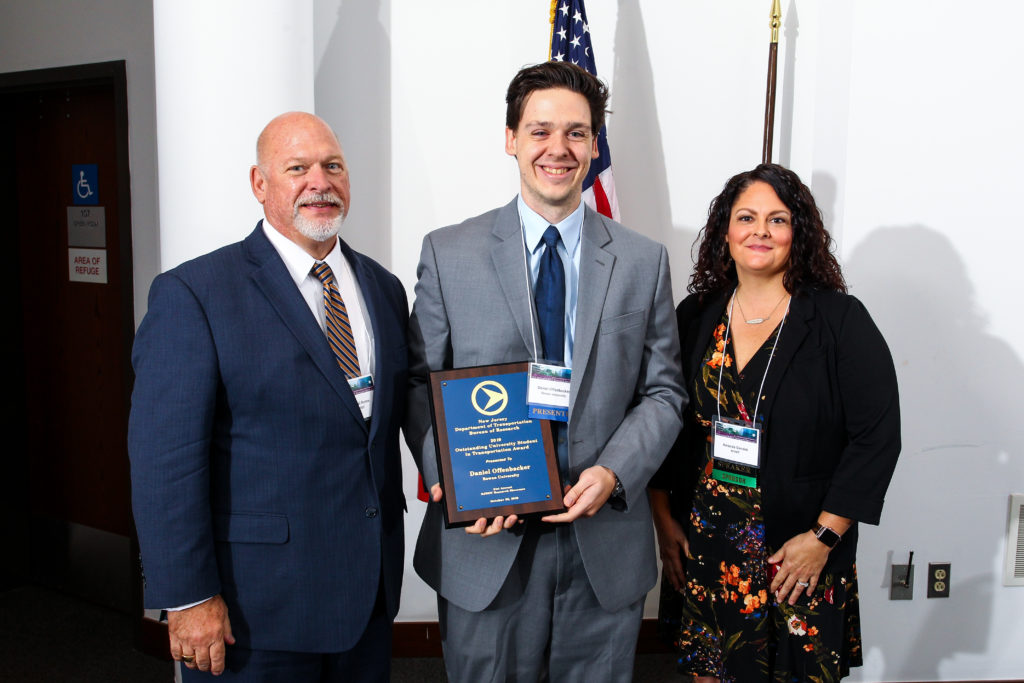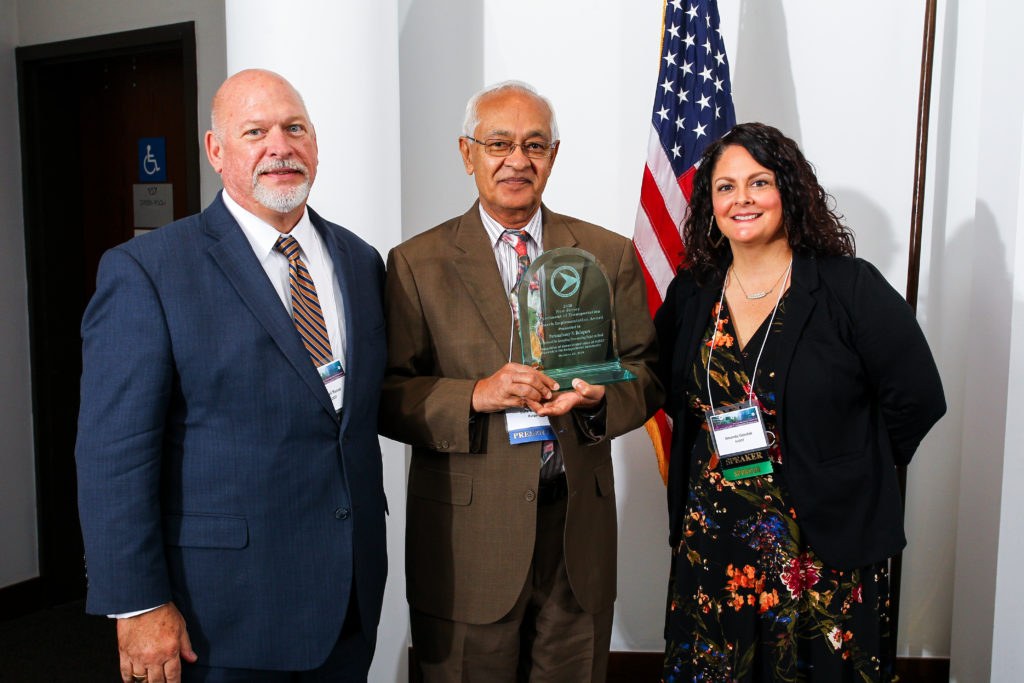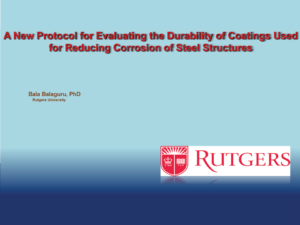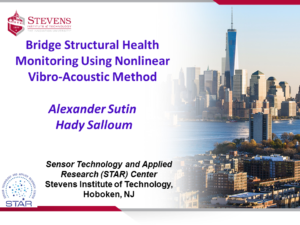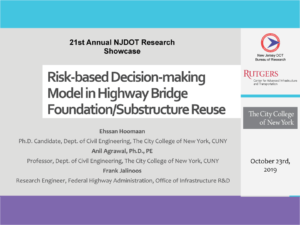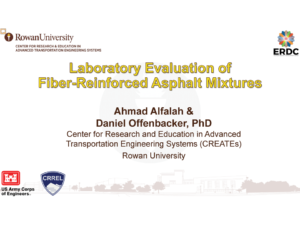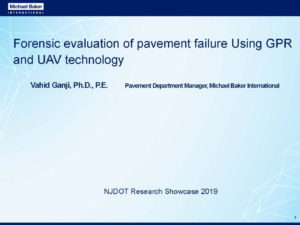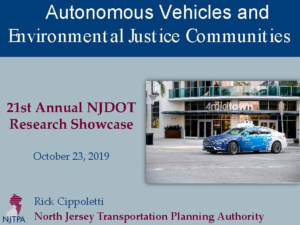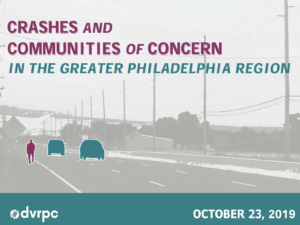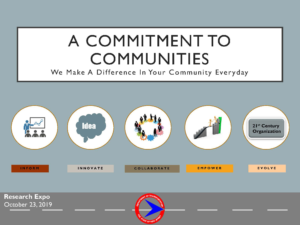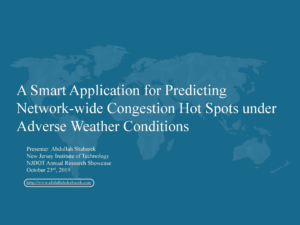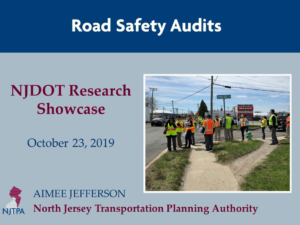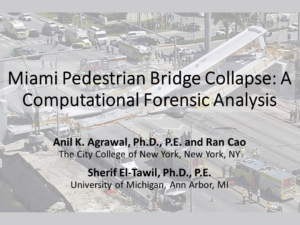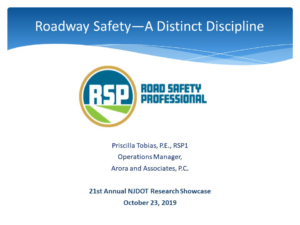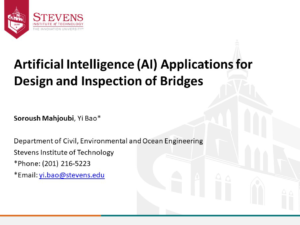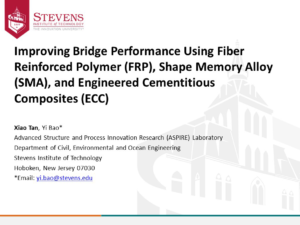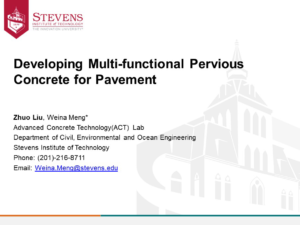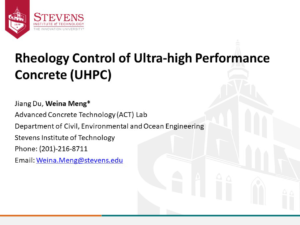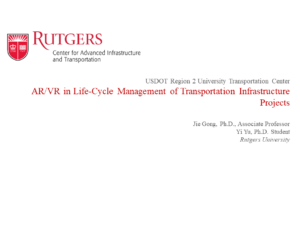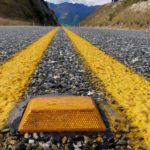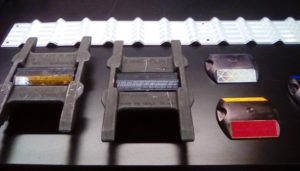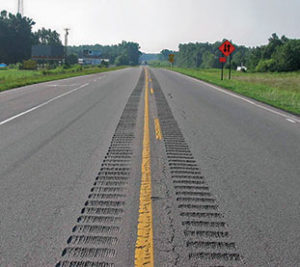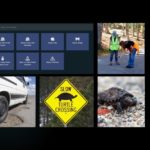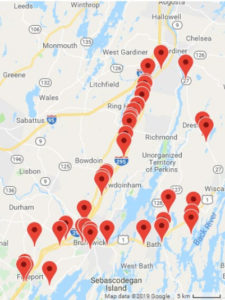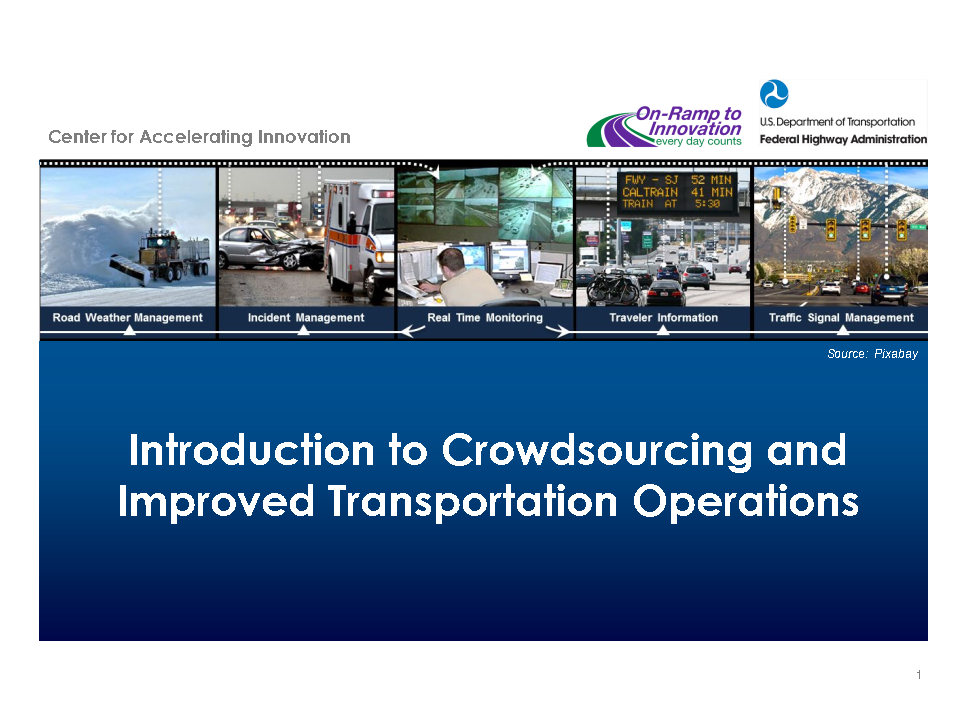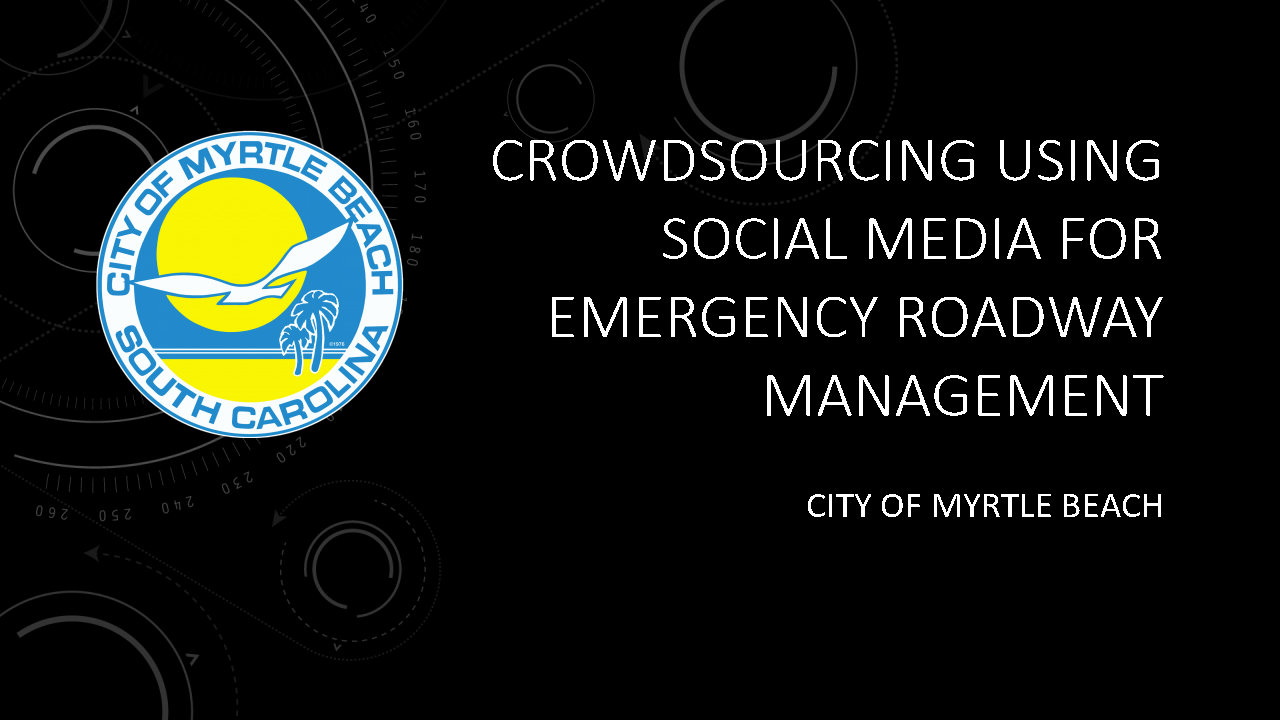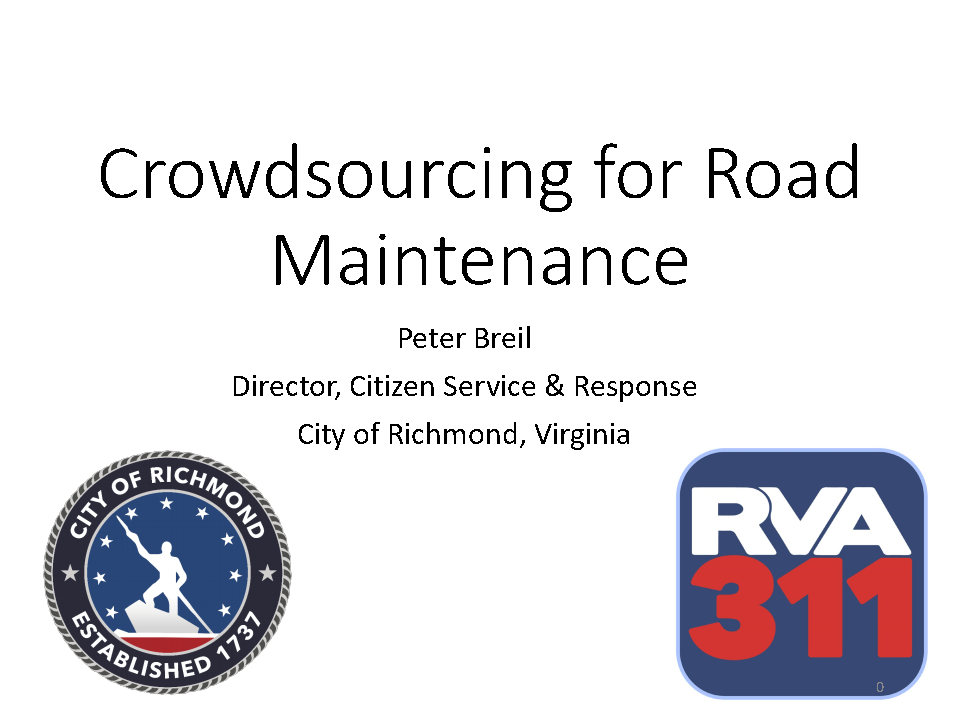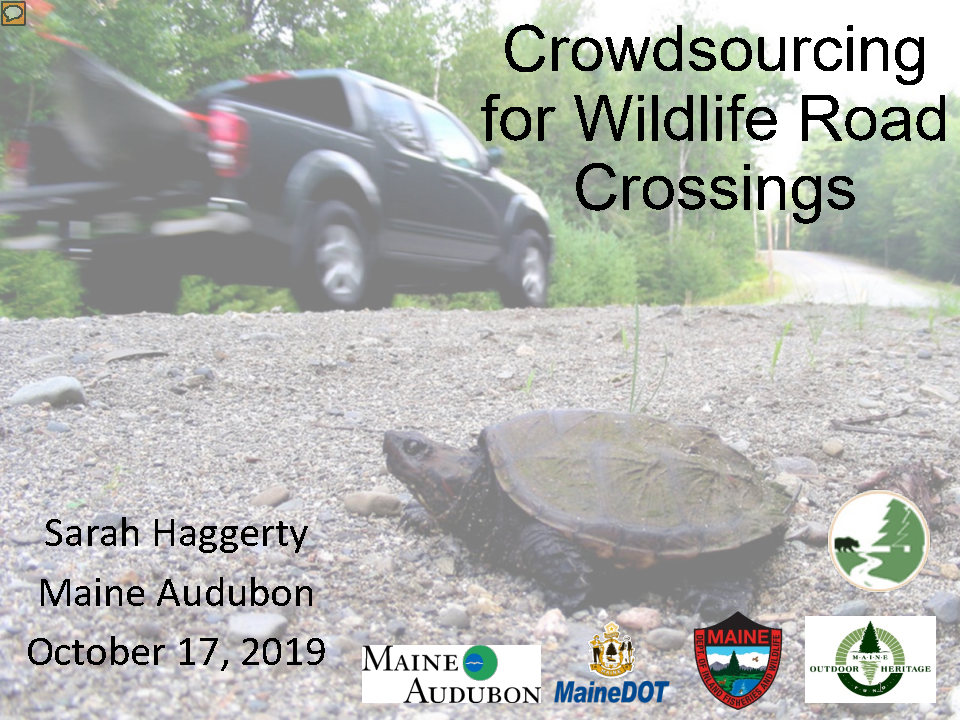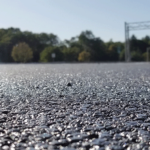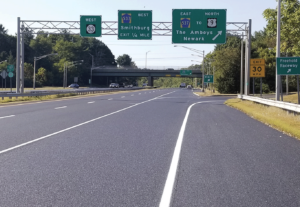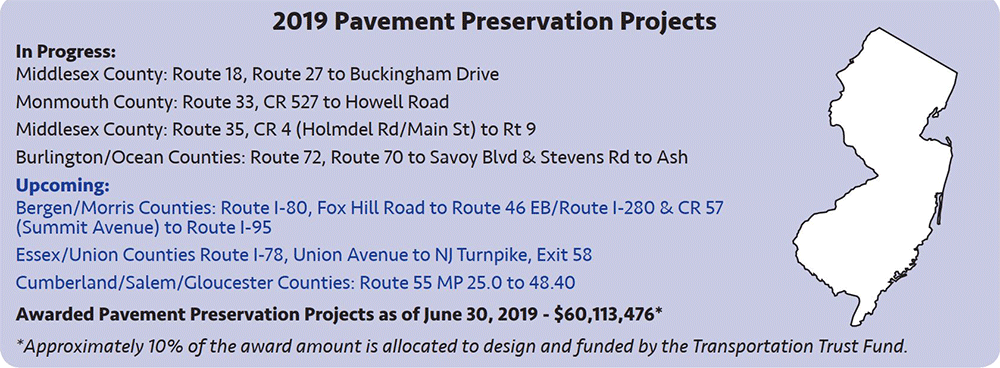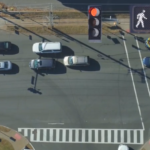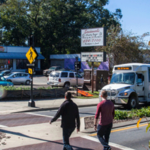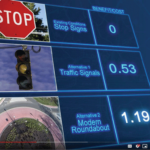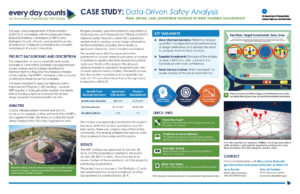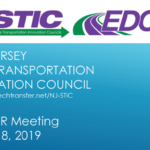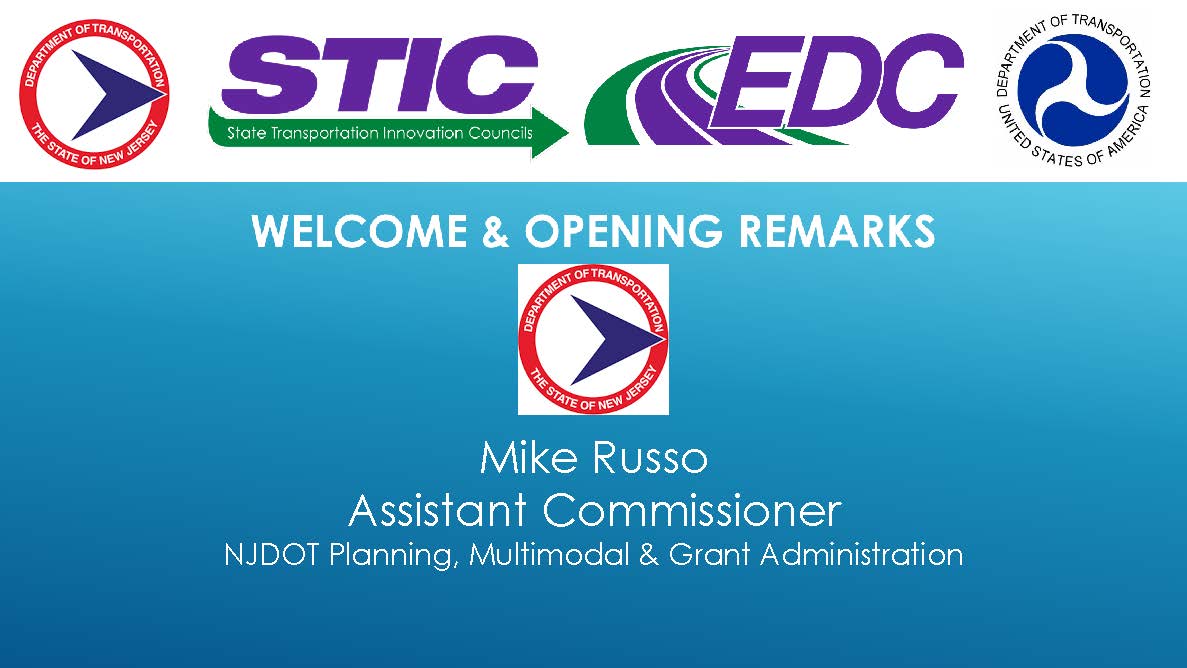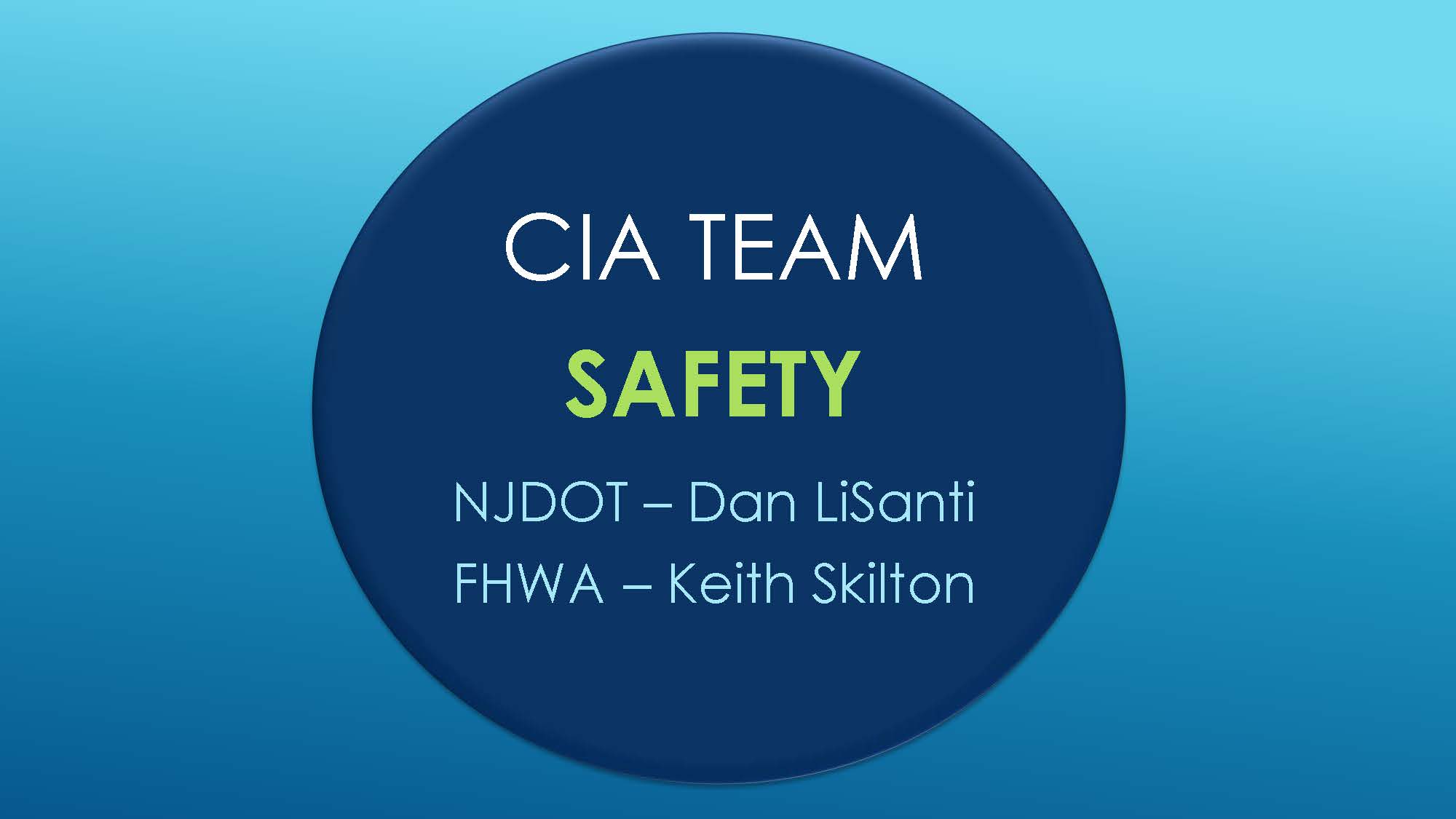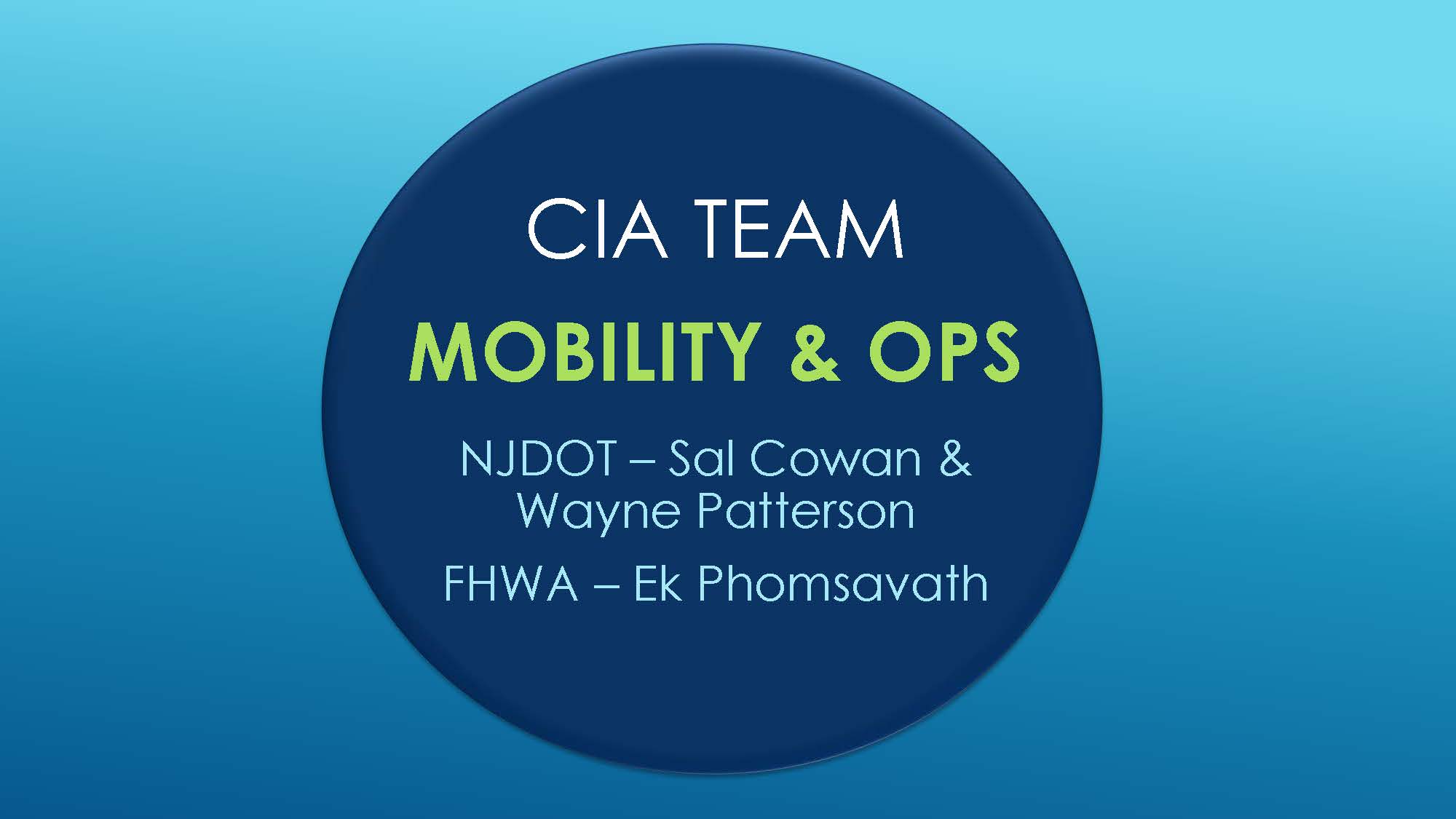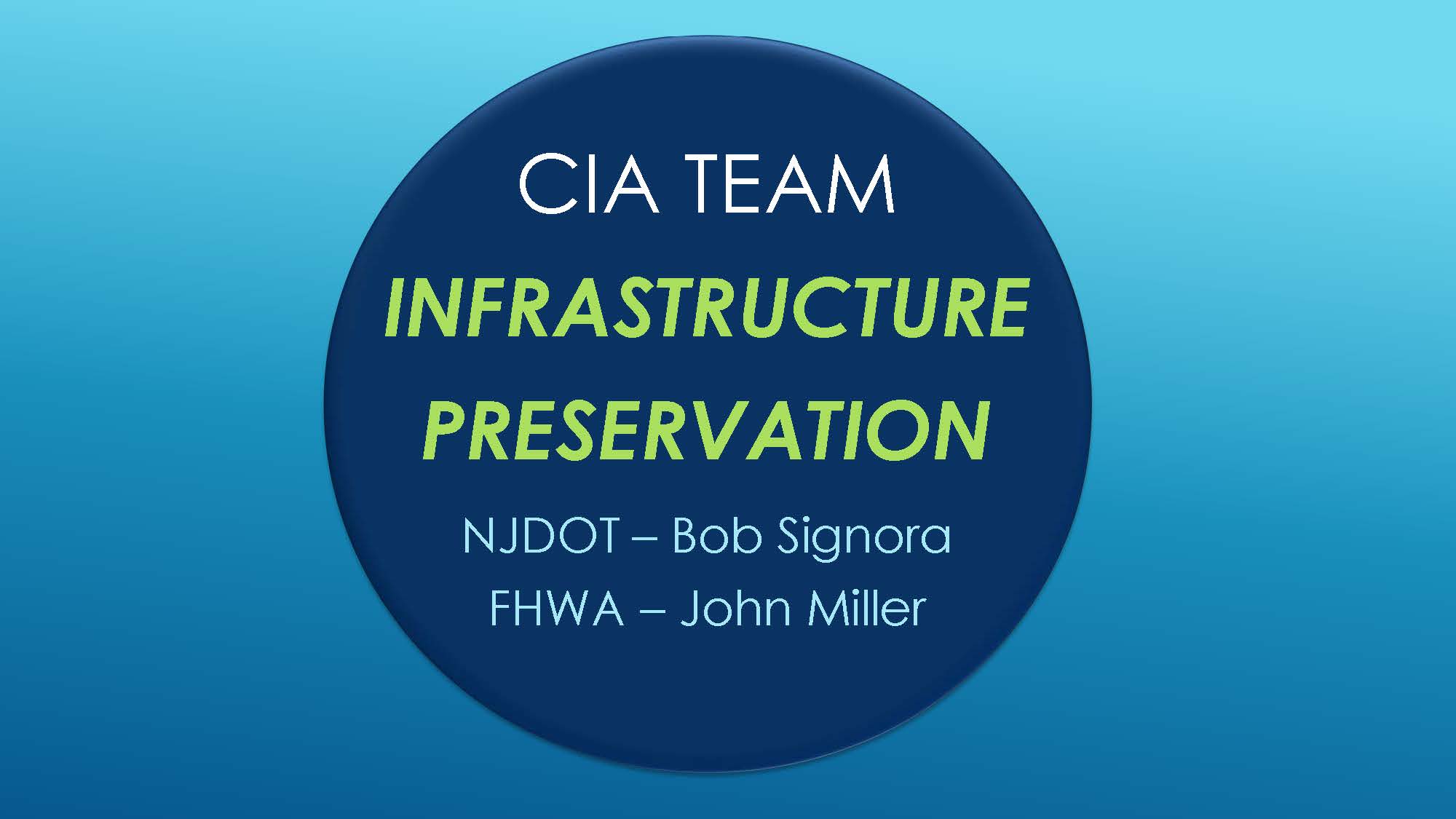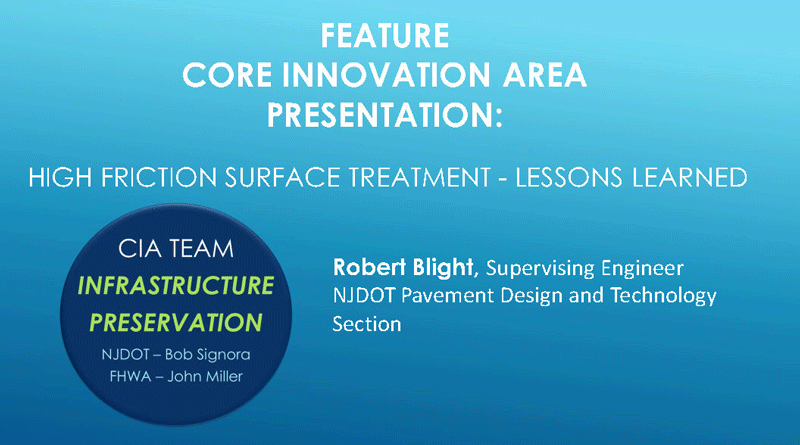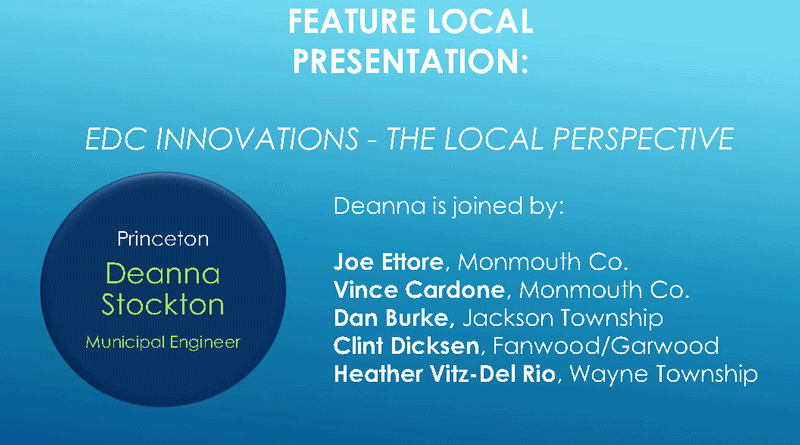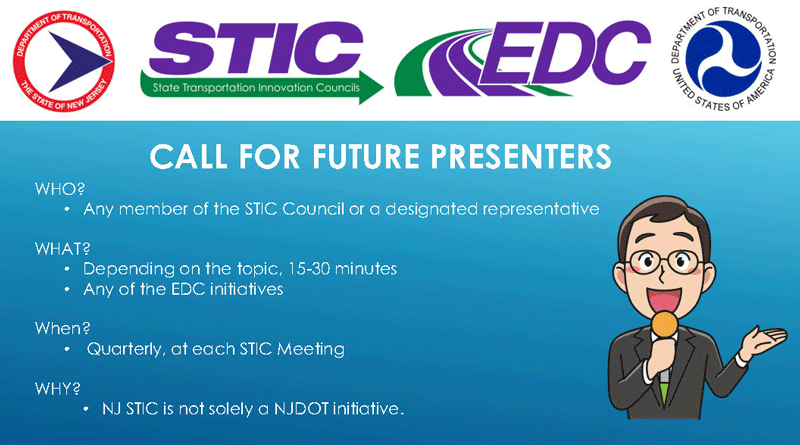Author Archive: Admin
Evaluating New Jersey’s Use of Raised Pavement Markers for Roadway Safety
In the United States, data has shown that more than a third of fatal crashes on two-lane undivided highways and 27 percent of fatal crashes on four-lane divided highways occur in dark, unlighted conditions. Raised Pavement Markers (RPMs) are a common device deployed for roadway safety around the world since the 1930s. RPMs are delineation devices used to improve preview distances and provide guidance for drivers in inclement weather and low-light conditions. There are two main types of RPMs, ones that can be used with snow plows and ones that cannot.
While most states install RPMs selectively based on particular locational characteristics of the roadways, New Jersey uses RPMs along all centerlines (solid and skip), regardless of traffic volume, roadway geometry, or roadway classification. The extensive use of RPMs in New Jersey has raised interest in understanding 1) whether this significant investment generates variant safety benefits at different locations; 2) whether there are alternatives or modifications to the existing RPMs; and 3) how to optimize the installation, monitoring, and maintenance of RPMs and their promising alternatives in order to attain a more cost-effective safety improvement.
The selected team from Rutgers University and Rensselaer Polytechnic Institute employed four distinct methods to address these research questions. The first was to conduct a literature review to inform the development of a methodological framework for quantifying the safety and cost-effectiveness of RPMs and their alternatives, based on specific road and traffic characteristics. Second, the researchers developed a luminance measurement method to compare the luminance of RPMs to different markers’ ability to inform drivers of road lines. Luminance measurement is defined as “the amount of visible light leaving a point on a surface in a given direction” (“Lighting Design Glossary”). Third, the group conducted a survey of other state DOTs practices and their guidelines for installation, including alternatives used. Lastly, the researchers developed a computer-aided decision support tool to calculate the life cycle costs of RPMs and their alternatives. Different alternatives were considered throughout the study, including various forms of rumble strips, preformed tape, and delineators.
The researchers came to several findings that provided insight into NJDOT’s current use and potential future research opportunities. The literature review of previous studies was inconclusive, with no consensus on whether RPMs affect the crash rate on roadways, with past research showing both negative and positive safety changes post-installation.
The survey of state DOTs yielded 22 responses from states throughout all regions of the country. The survey had two main sections, “RPM Installation” and “RPM Inspection and Maintenance”. No consensus or clear pattern was found among the states in terms of practices for installation, inspection, maintenance, and alternatives used. However, the researchers found that other state DOTs were more selective than New Jersey in choosing RPM installation sites based on traffic volume, accident history, and weather conditions.
To quantify the contribution that RPMs make towards safety outcomes on New Jersey roads, researchers compared the safety performance of county roads since unlike state roads, some county roads do not have RPMs installed. The researchers found that county roads with RPMs had a 19 percent lower crash rate than county roads without RPMs. The most significant decreases in crash rates occurred in nighttime, wet weather conditions, providing insight into the conditions that RPMs may be most effective.
In the lab luminance study, the team tested samples of new and used RPMs, along with alternatives such as wet pavement reflective tape and channel-mounted delineators to determine how far away drivers could see the markers in nighttime conditions. The average lifecycle for RPMs is 6 years, with a maintenance cycle of 2-3 years. Used RPMs showed a 20-30 percent decrease in luminance than new RPMs, but that did not translate to decreased visual performance.
Finally, the team created a computer-aided decision support tool to evaluate and compare the life cycle cost of RPMs and alternatives, based on specific operational characteristics. Decision-makers can couple information on safety benefits for each device with the total cost for per unit crash reduction from the tool to compare the value of the investment. The tool accounts for installation cost, traffic control cost, traffic delay cost, inspection cost, maintenance and repair cost, as well as the liability cost associated with incidents due to damaged RPMs or alternatives.
The research team also suggested several areas for future study for advancing NJDOT’s understanding of RPMs and their alternatives. The researchers recommended a study of optimal spacing or degree of continuous delineation that drivers need for safety. In the luminance study, all the devices had high visual performance despite variance in luminance when tested at a 100-meter viewing distance. However, the researchers noted, additional study was needed to see how the differences in luminance could affect visual performance at the threshold visibility distance (when the devices can be first seen). The results could help identify which device gives drivers more time and distance, resulting in potential reduction in nighttime crashes.
Lastly, one of the alternatives frequently mentioned throughout the study is rumble strips, which are used on roadways to create a noise and vibration to alert a driver when they leave their lane. When painted with retroflective coating to increase visibility, they are called rumble stripes (FHWA 2019). The researchers explained that rumble strips have not been studied in regard to safety effectiveness in New Jersey due to data limitations, making it a potential future research area.
New Jersey is in a unique position compared to other states with its comprehensive use of RPMs on state roadways. The researchers were able to provide valuable information to NJDOT, including a methodological framework for the department moving forward to quantify the safety effectiveness of RPMs and their alternatives and a computer-aided decision support tool to estimate life cycle cost. With this information and targeted areas for future research, NJDOT can aim to make cost-effective investments that will improve roadway safety.
Resources:
FHWA. “Rumble Strips and Rumble Stripes.” FHWA. April 1, 2019. https://safety.fhwa.dot.gov/roadway_dept/pavement/rumble_strips/general-information.cfm.
“Lighting Design Glossary.” Lighting Design and Simulation Knowledgebase. https://www.schorsch.com/en/kbase/glossary/luminance.html.
Liu, Xiang, John Bullough, Liwen Tian, Shan Jiang, and Mohsen Jafari. Evaluation of Raised Pavement Markers, Final Report. July 2018.
https://www.njdottechtransfer.net/wp-content/uploads/2019/04/FHWA-NJ-2018-004.pdf
Liu, Xiang, John Bullough, Liwen Tian, Shan Jiang, and Mohsen Jafari. “Technical Brief: Evaluation of Raised Pavement Markers.” July 2018.
https://www.njdottechtransfer.net/wp-content/uploads/2019/04/FHWA-NJ-2018-004-TB.pdf
Tech Talk! Webinar: Crowdsourcing for Local Operations
As the technology and portability of communications have become more widespread and instantaneous, "crowdsourcing" has become an increasingly popular method for identifying and addressing problems quickly. Crowdsourcing enables an organization to distribute workloads across a large group of people, utilizing their collective wisdom and amplifying the reach of the organization. Long popular for applications such as customer reviews for shoppers and critical takes from moviegoers, crowdsourcing tools are spreading in transportation and transforming the way operating agencies work with the public. Most often we have seen crowdsourcing used on apps like Waze for up-to-date traveler information or incident management, as these apps allow for every driver on the road to serve as the eyes and ears of the larger community.
On October 17, 2019, FHWA sponsored an innovation exchange webinar, "Crowdsourcing for Local Operations" that was “live” broadcasted by the Bureau of Research as part of its Tech Talk! series, for NJDOT staff who convened in the E&O Building, Training Room A. The webinar illustrated how local agencies are working, often with state partners, to expand the use of crowdsourcing across a wider set of application areas.
FHWA kicked off the webinar with a brief presentation, Introduction to Crowdsourcing and Improved Transportation Operations, that provided a definition and historical context for crowdsourcing, and a summary of typical sources of crowdsourcing data and applications in transportation. The presentation included an overview of the Every Day Counts (EDC) Program and technical assistance resources available at FHWA to support deployment of crowdsourcing. However, the primary purpose of the event was to showcase examples from around the country where Local Public Agencies and partnering stakeholders have deployed crowdsourcing solutions for emergency management, roadway and other maintenance, and wildlife protection.
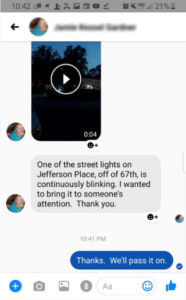
City of Myrtle Beach uses Facebook comments, direct messages, emails, phone calls, and other tools to receive citizen input.
Crowdsourcing Using Social Media for Emergency Roadway Management, City of Myrtle Beach, South Carolina. Mark Kruea, Public Information Director, described how the City of Myrtle Beach uses social media to help engage with residents quickly and effectively. The city takes phone calls, e-mails, and even messages and comments on Facebook on every topic, including trimming trees, fixing potholes, broken street lights, and other maintenance and needed capital improvements. The city tries to address requests within the same day which, in turn, encourages residents to use the system more frequently as they realize the city is listening and acting on suggestions. Mr. Kruea said that there was no reporting "threshold" for when a city would act on a specific comment or request, and even a single report of an issue can trigger a response. His talk made clear the potential benefits of fostering a strong trust between the community and the municipality, particularly in planning for and managing emergency situations. For example, during Hurricane Dorian, residents were able to send pictures of downed trees for clean-up crews to address, and adjustments were made to the storm level capacity of a regional detention pond prior to the storm event in response to community requests.
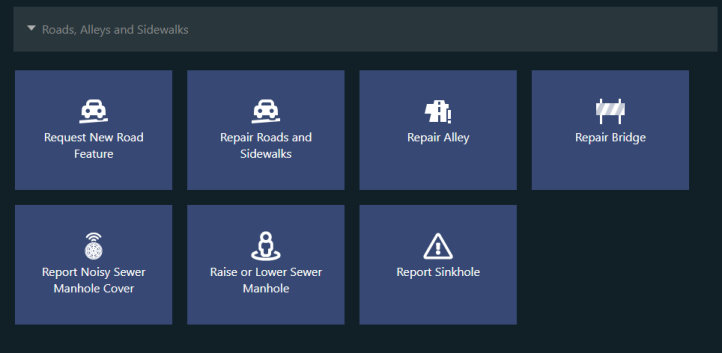
City of Richmond’s 311 portal makes it easy for citizens to report and track non-emergency service requests.
Crowdsourcing for Road Maintenance, City of Richmond, Virginia. Peter Briel, Director, Citizen Service & Response, spoke about the City of Richmond’s establishment of a 311 portal – phone, public internet portal, smartphone app -- for intake of most citizen requests for non-emergency services. The 311 program includes a call center, a request platform, and performance reporting. Once received, citizen requests are categorized by type and automatically routed to appropriate teams within the City’s various departments. Citizens can report a range of road issues through RVA311, including requests for new road infrastructure to report issues with maintenance, signage, traffic signals, and storm drain cleaning, among others. Citizens are able to upload photos through the app or the internet, check the status their requests, and receive push notifications when updates have been made by the city. Mr. Briel’s presentation highlighted some of the mapping and performance management measures available in using the 311 system along with some of the organizational, technical and cultural changes required for deploying the tool for the city residents and workforce. He noted that the most challenging part of implementation of the innovation was initiating the culture change between the citizens and the city so the 311 system would not become simply an app for complaints, but instead, for citizen empowerment.
While the first few presentations dealt with infrastructure maintenance and emergency response, the next two presenters showed how crowdsourcing could be used to avoid wildlife collisions and protect their habitats.
Crowdsourcing for Wildlife Road, Maine Audubon. Sarah Haggerty, a Conservation Biologist with Maine Audubon, described how her organization in association with Maine Department of Transportation and other environmental protection organizations, have worked to identify the worst areas for animal fatalities in order to prevent future accidents. Using an online tool created by the University of California-Davis Road Ecology Center, residents are able to upload photos and locations where they encounter roadkill, allowing the tool to identify hotspots around the state. In turn, municipalities can construct road-stream crossings that make it safe for wildlife passage as well as vehicular traffic, a strategy that was incentivized through extra points in state grants.
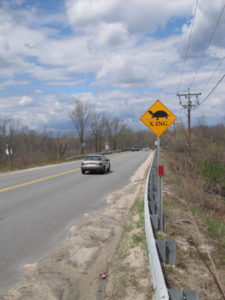
MassDOT has used historic roadway mortality data reported by citizen scientists and its maintenance personnel to prioritize and design signage, fencing, and crossings to protect wildlife endangered by traffic.
Linking Landscapes for Massachusetts Wildlife, Massachusetts Division of Fisheries and Wildlife. David Paulson, a Senior Endangered Species Environmental Specialist, described how his agency is working to incorporate habitat conservation into transportation planning and project development. Through the use of volunteers and MassDOT maintenance personnel, historic data on wildlife roadway mortality on particular road segments have been compiled. Citizens and workers have been asked to report locations where multiple turtles experience roadway mortality on a yearly basis, typically on roads which bisect wetlands. Concurrently, they also enlisted volunteers to help research amphibian migrations across roadways to establish documented migration routes that could be engineered around. The online tool collected data on location and roadkill numbers, giving Massachusetts a good idea of where countermeasures could be implemented.
Throughout the webinar, presentations highlighted different ways in which transportation system users and citizens can be turned into real-time sensors on system performance, providing low-cost, high-quality data on traffic operations, roadway conditions, wildlife mortality, and maintenance issues. Using crowdsourcing as a tool to garner information met with success in each of these cases, and the resulting actions taken by state and local governments have promoted trust between users and governing agencies. Given its wide-ranging impact and low costs to implement, FHWA surmised in closing that these and similar tools leveraging engagement would become industry standards in the future.
The Crowdsourcing for Local Operations webinar was one in a series of Innovation Exchange webinars sponsored by the Center for Local Aid Support (CLAS) in the Federal Highway Administration's Office of Innovative Program Delivery. Through Innovative Exchange webinars, CLAS seeks to bring cutting-edge transportation leaders to the table to share ideas and out of the box innovative practices that have proven results. More information about this webinar, upcoming webinars, and webinars available on demand can be found here.
Focusing on Reducing Rural Road Departures (Video)
The Federal Highway Administration recently released a video highlighting analytical and highway design efforts being used to prevent traffic deaths on rural roads by reducing roadway departures. The FHWA video introduces several relatively low-cost safety countermeasures to help drivers stay in their travel lanes and reduce the potential for, and minimize the severity of, rural roadway crashes, including rumble strips, enhanced signage, the Safety EdgeSM, and high-friction surface treatments.
While traffic crash locations can change from year-to-year, the FHWA recommends using a data-driven systemic analysis to assess types and patterns of rural crashes, roadway design where crashes occur, and specific areas with high concentrations of crashes or risk of crashes. Analysis of these data can also focus on when certain types of crashes occur. This information can help determine priority locations and design solutions that can be used to address needs in specific locations.
To learn more about the program and solutions designed to prevent traffic deaths on rural roads by reducing roadway departures, see the Federal Highway Administration' EDC-5 Innovation Reducing Rural Roadway Departures. More information on what New Jersey is doing during this round on the topic, can be found at: What is Reducing Rural Roadway Departures.
Paving the Way to Better Roads at Lower Costs
Pavement Preservation Projects Benefit New Jersey Taxpayers and Commuters
The last Commitment to Communities newsletter (Volume 7) highlighted some of the wonderful volunteerism of New Jersey Department of Transportation (NJDOT) employees. In this volume, I will share how the NJDOT achieves consistent progress through focused investments that keep our infrastructure in a state of good repair. Not only does the NJDOT prioritize improving the quality of life for our residents, but we also take great pride in the preservation and maintenance of our transportation system for the benefit of all New Jerseyans.
Within the last decade, NJDOT has significantly increased our use of pavement preservation treatments and preventive maintenance. Instead of waiting until pavements deteriorate to poor conditions requiring conventional, more costly resurfacing or rehabilitation treatments, preventive maintenance treatments are being applied at a fraction of the cost to sections of roadway in good or fair condition.
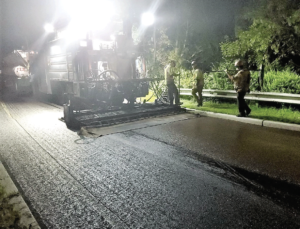
Slurry Seal treatment being applied to the Route 33, CR 527 to Howell Road Pavement Preservation Project in Monmouth County.
The purpose of these treatments is to renew and seal the pavement surface and extend the functional life of the pavement by six to twelve years depending on the preservation method. Sealing the roadway prior to deterioration reduces the chances for water to infiltrate the pavement and therefore prevents the opportunity for potholes to form. Since preservation treatments are less expensive than traditional resurfacing (one third to one half of the cost) preservation becomes a more cost effective life cycle treatment strategy while also minimizing the opportunity for potholes to develop throughout the life of the pavement.
In addition to providing cost savings to the state (and in turn, the tax payer), these methods can be implemented without major traffic disruptions and with minimal lane closures—saving commuters time and frustration. Furthermore, these projects have an accelerated design and construction phase, with most projects completed in one year.
The method of pavement preservation is not an idea unique to NJDOT. This method is nationally accepted as a cost effective treatment in pavement life cycle strategy. As a Department, we participate in the North East Pavement Preservation Partnership (NEPPP), a regional component of the national pavement preservation initiative facilitated by the National Center for Pavement Preservation.
System preservation is a requirement under federal legislation MAP-21, the Moving Ahead for Progress in the 21st Century Act. MAP-21 offers much needed funds in transportation investment.
Because these preventive techniques are so beneficial, we have substantially increased our annual investment in pavement preservation projects from $3 million in 2013 to $50 million in the 2020 program. Over the last two years, we have successfully designed or delivered 22 projects. They reflect our commitment to be responsible stewards of the 27-cent gas tax increase.
We look forward to increasing our investment levels in future years.
Pavement preservation is just one example among many of how NJDOT is committed to keeping New Jersey’s roadways in a state of good repair and by doing so, improving the lives of our residents. I strongly believe that any opportunity where we can take a proactive approach and in turn save the state and taxpayer time, money and disruption is an opportunity worth investing in.
Once again, thank you for taking the time to read this and please feel free to share it with your colleagues. If you have any questions about any of the information in the newsletter, please feel free to contact NJDOT’s Office of Constituent Relations at 609-963-1982.
Diane Gutierrez-Scaccetti
Commissioner
This article first appeared in the Fall 2019 NJDOT Commitment to Communities Newsletter.
NJDOT Safety Countermeasures Training and Education Videos
The following videos describe six of FHWA’s Proven Safety Countermeasures that improve pedestrian safety. NJDOT developed these videos to train and educate viewers on the design features and safety benefits of these initiatives.
FHWA began promoting Proven Safety Countermeasures in 2008 to encourage implementation among state, tribal and local transportation agencies. The list was updated in 2012 and 2017 and now comprises 20 countermeasures that support infrastructure improvements. These safety treatments and strategies were chosen based on proven effectiveness and benefits and can be adopted to reduce roadway departures, and intersection, and pedestrian and bicycle crashes.
Safe Transportation for Every Pedestrian (STEP) has been included as an Innovation under FHWA’s Every Day Counts (EDC) Rounds 4 and 5. NJDOT has prepared videos for training purposes on several of the topics featured under STEP – specifically, Pedestrian Crossing/Refuge Islands, Pedestrian Hybrid Beacons, Road Diets and Leading Pedestrian Intervals. Other strategies advanced under STEP are Rectangular Rapid Flash Beacons, Crosswalk Visibility Enhancements, and Raised Crosswalks.
NJDOT chose the following safety initiatives as subjects for safety videos:
What is a Leading Pedestrian Interval?
Leading Pedestrian Intervals (LPIs) give pedestrians the opportunity to enter an intersection 3-7 seconds before vehicles are given a green indication. With this head start, pedestrians can better establish their presence in the crosswalk before vehicles have priority to turn left.
What is a Walkway?
Walkways are any type of defined space or pathway for use by a person traveling by foot or using a wheelchair. These may be pedestrian walkways, shared use paths, sidewalks, or roadway shoulders. FHWA defines a pedestrian walkway as a continuous way designated for pedestrians and separated from motor vehicle traffic by a space or barrier. By contrast, sidewalks are walkways that are paved and separated from the street, generally by a curb and gutter.
What is a Pedestrian Crossing Island?
Medians and Pedestrian Crossing Islands in Urban and Suburban Areas are located between opposing lanes of traffic, excluding turn lanes. They provide a safe place for pedestrians to stop at the midpoint of the roadway before crossing the remaining distance. This is particularly helpful for older pedestrians or others with limited mobility.
What is a Pedestrian Hybrid Beacon?
Pedestrian Hybrid Beacons (PHBs) are a beneficial intermediate option between Rectangular Rapid Flash Beacons (RRFBs) and a full pedestrian signal. They provide positive stop control in areas without the high pedestrian traffic volumes that typically warrant signal installation.
What is a Road Diet?
Road Diets are the removal of a travel lane or lanes from a roadway and use of the space for other purposes and travel modes, such as bike lanes, pedestrian refuge islands, or transit.
What is a Reduced Left-Turn Conflict Intersection?
Reduced Left-Turn Conflict Intersections are geometric designs that alter how left-turn movements occur in order to simplify decisions and minimize the potential for related crashes. Two highly effective designs that rely on U-turns to complete certain left-turn movements are known as the restricted crossing U-turn (RCUT) and the median U-turn (MUT).
NJLTAP – Safe Transportation for Every Pedestrian Workshop
Safe Transportation for Every Pedestrian (STEP) is a Federal Highway Administration Every Day Counts (EDC-5) initiative. The NJ Local Technical Assistance Program (NJLTAP), in association with NJDOT and FHWA, is holding an all-day workshop training event on October 31st with an instructor from FHWA Resource Center’s Safety & Design Technical Service Team. The workshop training will provide an overview of the pedestrian safety crossing problem and identify resources and strategies for addressing it.
Pedestrian fatalities are on the rise, and account for more than 16% of all traffic fatalities nationwide. New Jersey is a pedestrian safety focus state, meaning we have more pedestrian fatalities than the national average, at about 25%. The “Spectacular 7” safety treatments to address pedestrian safety crossing problems will be reviewed. These are:
- Rectangular rapid flashing beacons (RRFBs)
- Leading pedestrian intervals (LPIs)
- Crosswalk visibility enhancements
- Raised crosswalks
- Pedestrian crossing/refuge islands
- Pedestrian hybrid beacons
- Road diets
This is a full-day workshop with a group field exercise where participants will evaluate a nearby location for pedestrian safety and make recommendations for improvement if needed.
Agenda:
- Welcome and Introductions
- Why STEP: Background and Data
- Policies and Process
- STEP Treatments
- Site Visit
- Report Out
- Final Remarks and Evaluation
Instructor: Peter Eun, Transportation Safety Engineer, FHWA Resource Center’s Safety & Design Technical Service Team
Credits: 6 PDH, DCA CPWM credits applied for: 6 technical
There is no fee for this workshop, however advance registration is required.
For more information and to register for the event, visit NJLTAP Training & Events
New Protocol for Accepting Over-Coating Paint on Steel
The Research Advisory Committee of the American Association of State Highway and Transportation Officials (AASHTO) selected an NJDOT project as one of 16 high-value research projects for 2019 in the category of Smart Maintenance and Preservation. Researchers from Rutgers’ Center for Advanced Infrastructure and Transportation, Perumalsamy Balaguru, Husam Najm, and David Caronia, developed a new testing method for the durability of paint overcoat on steel structures, such as bridges.
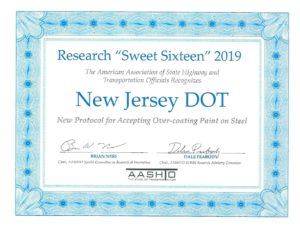
NJDOT received AASHTO’s Research “Sweet Sixteen” 2019 award for innovative research establishing a new protocol for durability testing of structural steel overcoats.
On behalf of the NJDOT Bureau of Research, Giri Venkiteela, Research Project Manager, delivered a poster presentation and Pragna Shah, Research Project Manager, accepted the AASHTO award at the 2019 National RAC and TRB State Representatives Meeting in Santa Fe, New Mexico in July 2019.
The new protocol allows for reduced testing time from previous methods, identifies durable coatings, simulates field performance, and has significant potential for adoption in accepting all new coatings. This new protocol will save money and reduce environmental pollution resulting from degraded coatings. The innovative research for this new protocol is described in the Final Report and Technical Brief.
Data-Driven Safety Analysis: New Jersey Case Study
The New Jersey Department of Transportation (NJDOT), in partnership with the Delaware Valley Regional Planning Commission (DVRPC) and Burlington County officials, used predictive safety analysis tools to help secure funding for a modern roundabout at a rural intersection. The intersection of county road 528 and county road 660 in Chesterfield Township had experienced severe crashes and had been identified for improvement in a prior study conducted by the DVRPC. However, state or county construction funding was not available. The team decided to apply for Highway Safety Improvement Program (HSIP) funding. However, HSIP requires a thorough safety analysis of projects before funding approval to ensure the chosen design provides the best benefit/cost ratio.
The analytical effort was recognized by the Federal Highway Administration in both a case study with links to several useful resources and the below video.

